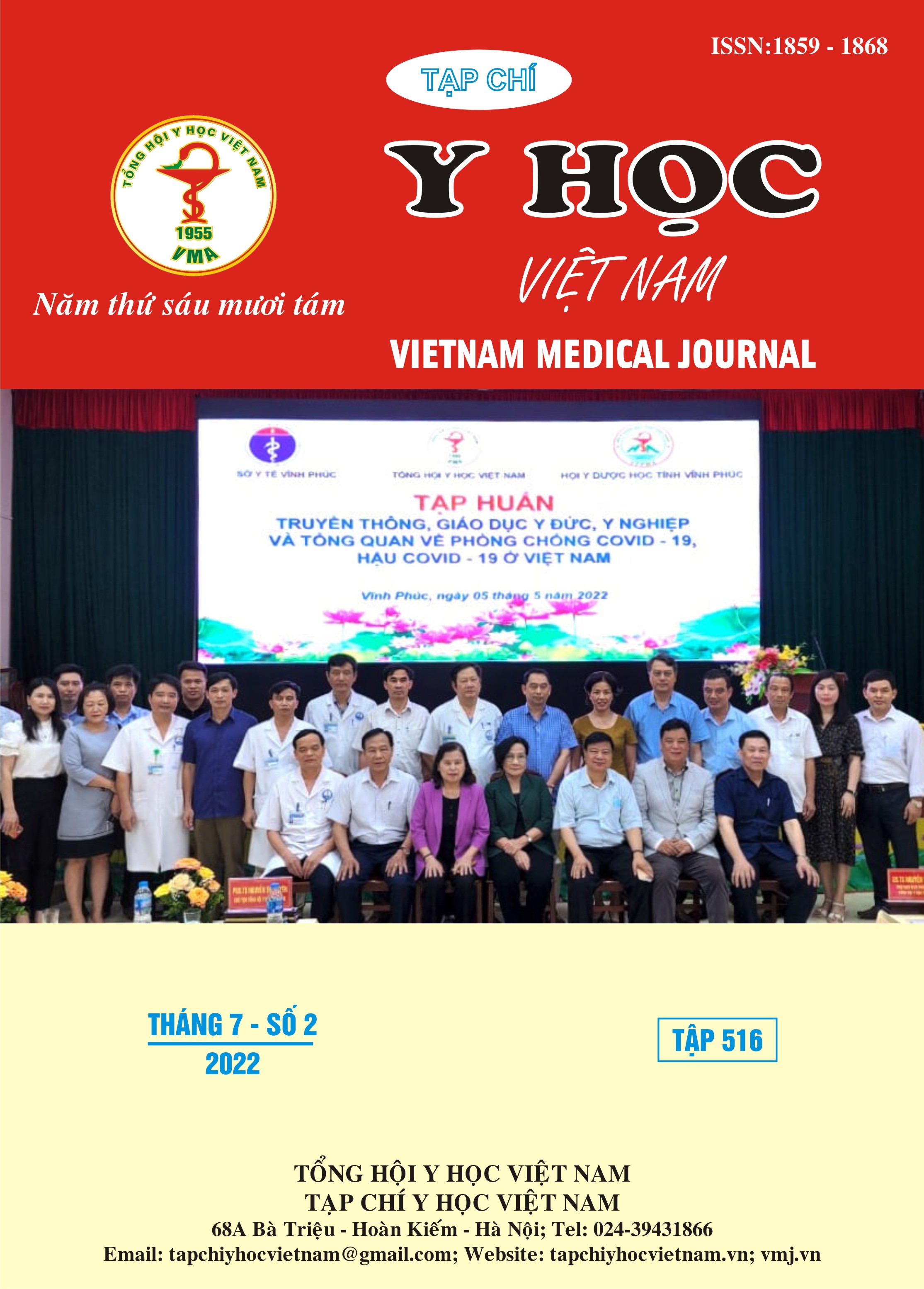TO EVALUATE EXERCISE CAPACITY PERFORMANCE IN PATIENTS ACUTE MYOCARDIAL INFARCTION AFTER INTERVENTION
Main Article Content
Abstract
Objective: To evaluate exercise capacity performance in patients acute myocardial infarction afterintervention at Hanoi Medical University Hospital. The results show that the patient's exercise capacity after intervention for acute myocardial infarction was quite good. The mean of maximal blood pressure during maximal exertion was 161.2 ± 20.3 (mmHg). The diastolic blood pressure when the mean of maximal exertion was 94.0 ± 8.6 (mmHg), mean of maximal exercise heart rate was 149.04 ± 23.31 (beats/min), mean PRP was 23,696 ± 5274, mean HRR was 14 .38 ± 7.16, HRR ≥ 12 accounted for 73%, mean MET was 9.7 ± 2.9, exertion time (min) was 12.21 ± 3.43. Exercise testing of patients after interventional acute myocardial infarction was safe, no dangerous events followed during and after exercise at the time of patient follow-up one month.
Article Details
Keywords
patients after acute myocardial infarction intervention, exercise capacity, MET
References
2. G. F. Fletcher, P. A. Ades, P. Kligfield, et al (2013). Exercise standards for testing and training: a scientific statement from the American Heart Association. Circulation 128 (8), 873-934 (2013).
3. B. Ibanez, S. James, S. Agewall, et al (2018). 2017 ESC Guidelines for the management of acute myocardial infarction in patients presenting with ST-segment elevation: The Task Force for the management of acute myocardial infarction in patients presenting with ST-segment elevation of the European Society of Cardiology (ESC). Eur Heart J 39 (2), 119-177.
4. Inge I de Liefde, Sanne E Hoeks, Yvette R B M van Gestel, et al(2008). Prognostic value of hypotensive blood pressure response during single-stage exercise test on long-term outcome in patients with known or suspected peripheral arterial disease. Coron Artery Dis 19 (8), 603-607 (2008).
5. F. L. Gobel, L. A. Norstrom, R. R. Nelson, et al (1978). The rate-pressure product as an index of myocardial oxygen consumption during exercise in patients with angina pectoris. Circulation 57 (3), 549-556.
6. A. Grochulska, S. Glowinski and A. Bryndal (2021). Cardiac Rehabilitation and Physical Performance in Patients after Myocardial Infarction: Preliminary Research. J Clin Med 10 (11): 2253.
7. E. O. Nishime, C. R. Cole, E. H. Blackstone, et al (2000). Heart rate recovery and treadmill exercise score as predictors of mortality in patients referred for exercise ECG. JAMA 284 (11), 1392-1398.
8. C. R. Cole, E. H. Blackstone, F. J. Pashkow, et al (1999). Heart-rate recovery immediately after exercise as a predictor of mortality. N Engl J Med 341 (18), 1351-1357.
9. J. Myers, M. Prakash, V. Froelicher, et al (2002). Exercise capacity and mortality among men referred for exercise testing. N Engl J Med 346 (11), 793-801.


